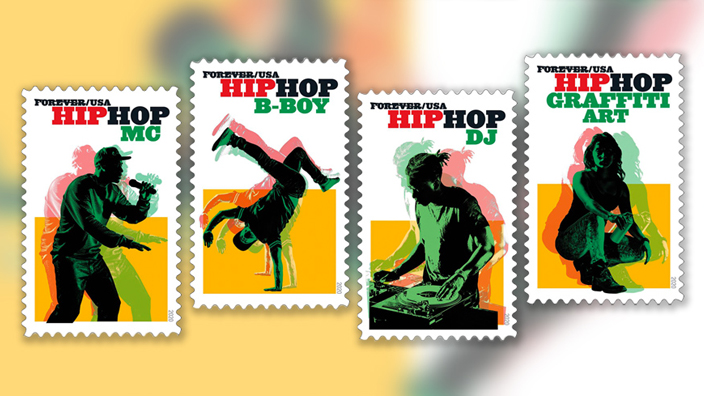It was born in the streets.
Hip-hop — the influential music, dance and art movement that will be honored with new stamps from the Postal Service this week — emerged in the mid-1970s at playgrounds and community centers in African American and African Caribbean neighborhoods in New York City.
The budget cuts of the era resulted in the elimination of music and art programs, prompting young New Yorkers to find new outlets for their creativity.
Some used city streetlights to power homemade speakers that brought music to block parties, while others practiced rhymes on street corners using portable tape players called boom boxes. Still others practiced dance moves on sidewalks covered with discarded cardboard or used markers and aerosol paint to decorate urban landscapes.
These four activities — DJing, rapping, break dancing and graffiti art — evolved together and eventually became known as “hip-hop.”
In the beginning, DJs were the heart of the movement.
Pioneers like DJ Kool Herc changed the way music was played, using turntables to mix back and forth between multiple records and extend the percussion segment known as “the break.”
Another technique, “scratching” — playing a record backward in a rhythmic pattern — excited break dancers, who earned their name through the amazing acrobatic moves they displayed during the DJs’ performances.
Rappers began performing over the DJs’ innovative beats, first as crowd control and general emceeing (“Everybody say, ‘Ho-oh!’”), and soon became featured performers who told more elaborate rhymed stories to the beats of the increasingly dynamic musical selections.
Hip-hop battles in rhyme and dance also provided New York’s youth with new ways to resolve neighborhood conflicts.
Meanwhile, graffiti artists — some of whom were also dancers and rappers — honed their mural designs on city subways before finding recognition in more traditional venues.
By 1979, the movement had hit the radio airwaves when Sugarhill Gang’s “Rapper’s Delight” became the first hip-hop record to gain popularity in the mainstream.
It was an early sign of the widespread appeal that hip-hop would find in the decades to come.
This is the first of two articles on the history of hip-hop. Tomorrow: Hip-hop’s ongoing evolution.


